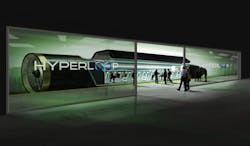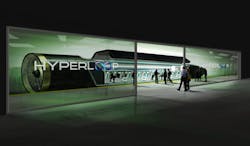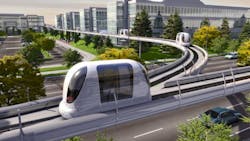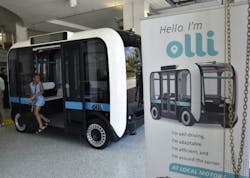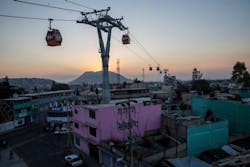Public transportation of the future: Four new sustainable technologies
On my way in to work this morning, I walked through a tree lined street, admired my wintry surroundings, breathed fresh air, and chatted with one of my neighbors at the bus stop. I listened to music and sent a message to my mom while waiting to transfer to the metro. A short time later I arrived at work with a clear head, and ready to start my day.
Public transportation is a new experience for me. Until a few months ago I started each day by driving 42 miles. After the hour-long drive, I would arrive at work already stressed before the day even began.
Sound familiar?
In 2014, Americans spent an average of 42 hours per year sitting in traffic jams. In Washington, DC the average was nearly double that at 82 hours per year – the worst traffic in the U.S. Seattle’s commuters aren’t doing much better – the Emerald City has the second-worst congestion in the U.S.
What else could you be doing with nearly three and a half days of your life?
It’s no wonder use of public transportation is on the rise. Taking cars off the road, and delivering happier, less-stressed employees to the workplace is both sustainable and benefits personal wellness.
Busses and metros aren’t new concepts, and the reinvention of public transportation to serve our urban environments has captured the imagination of our most brilliant innovators. The technology to radically transform the commuting experience exists and the demand is mounting.
The future is now. We explored four new technologies for public transportation that might change everything:
Hyperloop
This new technology proposed by SpaceX’s Elon Musk is capable of moving people at aircraft speeds for the price of a bus ticket. The levitated pod uses an electric motor to glide silently through a low-pressure tube. Full system testing is scheduled for 2017 with a goal to start moving passengers in 2021, with routes are under development in 5 countries. The Hyperloop is designed to operate on demand rather than a fixed schedule, reducing wait times.
Personal Rapid Transit (PRT)
Personal rapid transit systems currently exist in four cities; including one in Morgantown, West Virginia. Also referred to as podcars, PRT hold smaller groups of people in cars that are operated by computer using electric motors, and move on light weight tracks. Riders select their destination prior to riding, and each car only goes to their final destination without stops on the way. Fares are kept low without the need for a driver or empty trips. In Morgantown, each trip is only 50 cents. These driverless cars have been operating since 1975! Despite the long history, podcars have been slow to take off due to the cost of integrating them into an existing city landscape. Maybe the future of podcars will look more like the next technology: the self-driving bus.
Olli Self Driving Mini Bus
The Olli is an electric mini bus launched in June 2016 in National Harbor, Maryland. This driverless bus is powered by IBM’s Watson technology. Rather than operate on a fixed schedule and route, Olli is operated and paid through an app. Where ever you are, can become a bus stop. This bus is ideal for filling in the gaps in public transportation to take you that last mile from the metro stop. Thanks to the Watson technology, Olli can also have a conversation with you to provide a dinner recommendation or even tell you to bring an umbrella. Olli also had trial runs in Copenhagen, Las Vegas and Miami in late 2016.
The Mexicable
Traffic congestion in Mexico City is intense enough that people have taken to hiring helicopters or using expensive tolled tiered highways to stay out of the fray. The residents of Mexico City are literally choking on pollution that comes from traffic congestion as authorities were forced to declare environmental emergencies to order millions of cars off the roads.
One exciting solution: Gondolas, allowing commuters to glide over traffic on the Mexicable, a seven-stop line that runs just over three miles through a furrow of poor hillside neighborhoods.
Mexicable is part of a trend in Latin America that is linking rural and urban areas through an integrated system of cable cars.
Source: NYTimes
Architects, developers, and real estate owners should consider the power of transit-oriented development – building businesses and communities in places that are pleasurable to travel to is good for business and the environment. Embrace commuting alternatives, and celebrate the innovations coming from innovators around the globe.
On my way home tonight, rather than fight traffic in my car for 42 miles, I will get through another chapter of Thriller Thirteen, followed by a short walk home from the bus stop; ready to enjoy the evening with my family. What mood will you be in when you get home?
